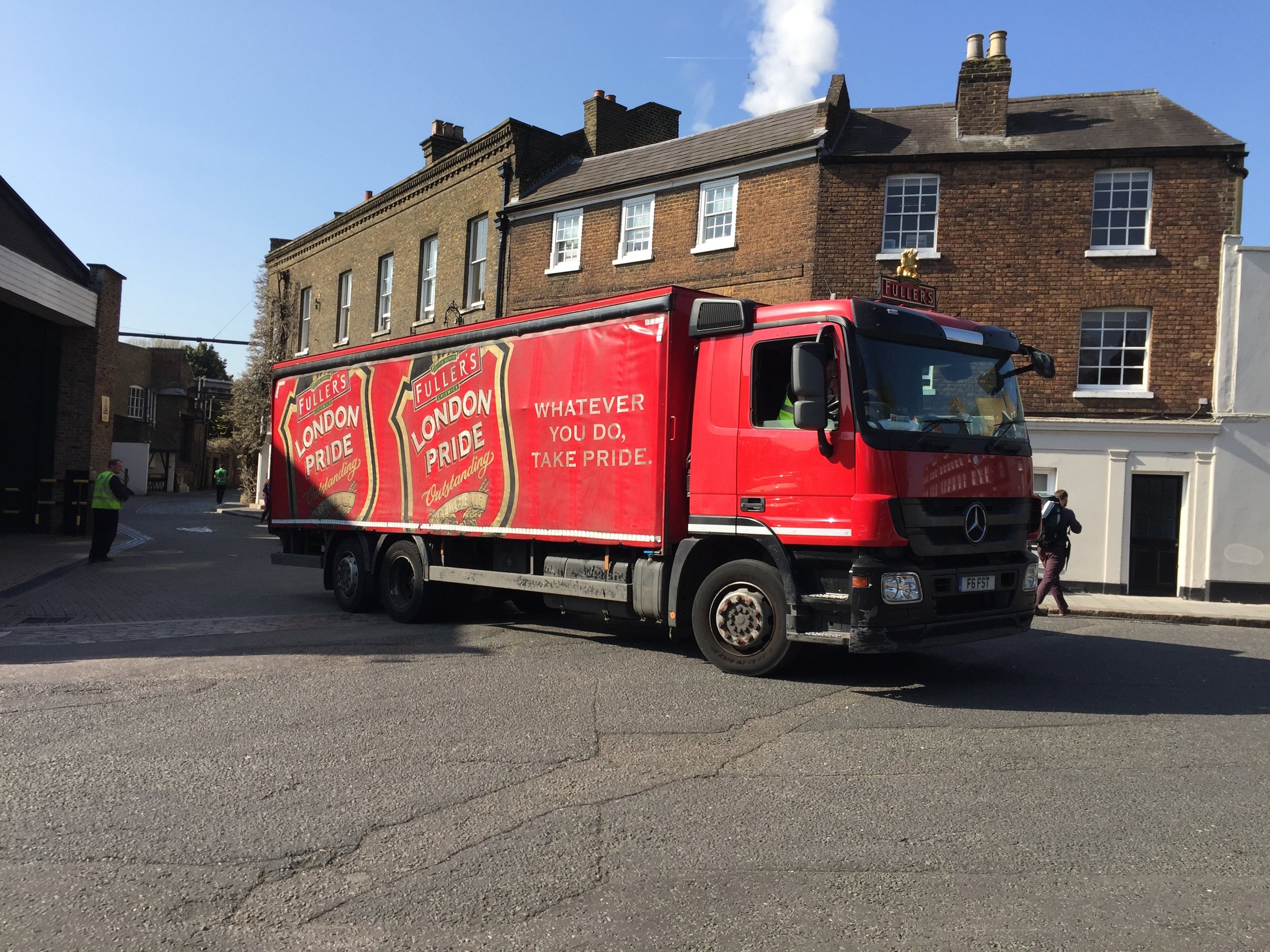The Value of Fuller’s
In 2017, Fuller’s asked me to write a story about their new collaborative project, Fuller’s & Friends. The idea was that I would follow things from start to finish, taking in a dinner, an afternoon of preparatory meetings, a trip to Manchester to see a pilot brew at Marble, eight hours spent at the Griffin Brewery for the brewing of Cloudwater’s New England IPA, a variety of phone interviews … and then I would write it up. An arduous schedule, no doubt, but I took it on: it was a chance to meet brewers I didn’t know, after all, and - an unexpected bonus, this - to hear Thornbridge’s Dominic Driscoll’s strong opinions on a surprisingly wide variety of topics.
On the morning after the opening dinner, the brewers were invited for a tour of the Griffin Brewery. I can’t honestly say I detected reverence as Fuller’s head brewer Georgina Young led them through a brewhouse that, in its size and relative antiquity, is a long way from their world of industrial units and conical fermenters, but there was plenty of good-natured enjoyment. James Kemp, then of Marble but now with Yeastie Boys, offered samples of the version of Gale’s Old Ale he had made at Marble, and then kept us up-to-date with what had changed since his days on the brewing team at Fuller’s (‘Not that much’ was the final assessment).
Fuller’s is not the only historic family brewery to have leapt head-first into the craft-beer world (St Austell and Adnam’s, to name but two, have done it very successfully) but it’s hard to think of another that could have pulled off a project like Fuller’s & Friends. Brewers love Timothy Taylor and Harvey’s, for example, but their success is based on sticking to what they know best. And they don’t have John Keeling, the former head brewer at Fuller’s, who appears to be pals with pretty much everyone in the world of brewing - of which more later.
There are plenty of ways to value Fuller’s. We’ve known since last Friday that the brewing arm is worth £250m (which includes The Griffin Brewery’s freehold), and beer-lovers understand that Fuller’s - even if it was never one of London’s big beasts in its 19th-century heyday - represents the last link, the last bit of golden thread that stretches back to that world-changing era. And it is a link: American Pale Ales brewed in South London archways can be delicious, but beers like 1845 or London Porter, which draw on Fuller’s brewing historic logs, are like tasting the past. ESB, for goodness sakes, is a style of its own, at least across the Atlantic.
But it’s the human element that has made Fuller’s so important in modern London brewing. When the LBA was getting started, Keeling and fellow Fuller’s brewer Derek Prentice were central (here’s founder Phil Lowry’s thoughts on the opening days, with a fascinating picture of some of those early London brewers at the top; what divergent paths they’ve had since). Evin O’Riordain, founder of The Kernel, told me then that the best thing about the LBA was being able to ask Keeling and Prentice questions, which they’d happily answer. Keeling is now Chairman of the LBA while Prentice, now at Wimbledon, has always been involved in some way or another.
Fuller’s has given London beer more than just good advice. I first encountered Rob Topham in the tasting room at Fuller’s, back in 2013, as he smirked at something Prentice had said (I was writing a story for Camra’s BEER magazine about the handover from Prentice to Georgina Young as brewing director). Now he’s the head brewer at Camden Town, responsible for the wonderfully consistent Camden Hells.
And consider the current brewing team, a group which belies the idea that family breweries are inherently conservative. How many London breweries have a woman in charge of brewing? A handful, at best - and amongst them is Young (pictured left), who is just as willing to help other brewers as Keeling, if not quite as ready with a well-worn quip. Shift brewer Hayley Marlor is young, female and northern - an identity that is vanishingly unusual in London brewing. She’s exactly the sort of person this city’s brewing scene needs more of. And how many breweries have someone like Henry Kirk, with his world-beating collection of baseball caps and perennially quizzical expression? He is utterly unique.
The people who sold Fuller’s to Asahi were the same well-spoken posh chaps who have been selling England by the pound since the War. But the people who sold Fuller’s to the rest of modern London brewing - the brewers and, if I’m honest, the superb communications team - are a bit different. Asahi would be well-advised not to change too much in that department.



